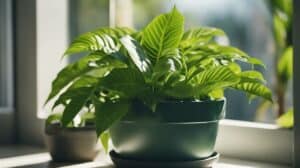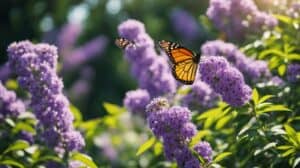The Lady’s Slipper Orchid, also known as Cypripedium calceolus, is a unique and beautiful plant that is native to Europe and parts of Asia.
This orchid is known for its slipper-shaped lip, which is designed to attract pollinators such as bees and butterflies.
While the Lady’s Slipper Orchid is a popular choice for gardeners and plant enthusiasts, it requires specific care to thrive.

To ensure the health and longevity of your Lady’s Slipper Orchid, it is important to understand its specific care requirements.
This includes providing it with the appropriate amount of light, water, and nutrients.
Additionally, it is important to be aware of potential pests and diseases that can impact the plant.
By following these care tips, you can enjoy the beauty of the Lady’s Slipper Orchid in your home or garden.
Understanding Cypripedium Calceolus

Species Overview
Cypripedium Calceolus, commonly known as the Lady’s Slipper Orchid, is a beautiful and unique orchid species.
It is a terrestrial orchid that grows in soil rather than on trees like many other orchids.
The Lady’s Slipper Orchid is known for its distinctive pouch-shaped lip that resembles a slipper, which gives it its name.
This orchid species is a member of the Cypripedium genus, which includes approximately 50 species of orchids.
Habitat and Distribution
The Lady’s Slipper Orchid is native to Europe and Asia and can be found in a variety of habitats, including woodlands, meadows, and rocky slopes.
In the wild, this orchid species is often found growing in nutrient-poor soils, which makes it a challenging plant to cultivate.
The Lady’s Slipper Orchid is also a protected species in many countries, which means that it is illegal to collect or disturb it in the wild.
When grown in cultivation, the Lady’s Slipper Orchid requires specific care to thrive.
It prefers cool temperatures and high humidity levels, and it needs well-draining soil that is rich in organic matter.
This orchid species also requires bright, indirect light, and it should be watered regularly but not overwatered.
With proper care, the Lady’s Slipper Orchid can be a rewarding and beautiful addition to any orchid collection.
Cultivation Essentials
Light Requirements
The Lady’s Slipper Orchid prefers a moderate amount of light. It should be placed in an area that receives bright, indirect light.
Direct sunlight can damage the leaves of the plant. If the orchid is not receiving enough light, it may not produce flowers.
Soil Composition
The soil that the orchid is planted in should be well-draining and have a pH level of around 6.0 to 7.5.
A mixture of peat moss, perlite, and bark is ideal for the Lady’s Slipper Orchid.
It is important to avoid using soil that is too dense or compact, as this can lead to root rot.
Watering Practices
The Lady’s Slipper Orchid should be watered regularly, but not excessively. It is important to allow the soil to dry out slightly between waterings.
Overwatering can lead to root rot and other issues. The orchid should be watered thoroughly, allowing the water to drain out of the bottom of the pot.
Temperature and Humidity Control
The Lady’s Slipper Orchid prefers temperatures between 60°F and 75°F.
It is important to keep the orchid away from cold drafts and extreme temperatures. The orchid also requires high humidity levels, around 50% to 70%.
This can be achieved by placing a tray of water near the plant or using a humidifier.
Overall, the Lady’s Slipper Orchid is a beautiful and unique plant that requires specific care.
By following these cultivation essentials, you can ensure that your orchid thrives and produces stunning flowers.
Propagation and Repotting

Propagation Techniques
Propagation of the Lady’s Slipper Orchid can be done through division or seed sowing.
Division is the most common and easiest method, and it should be done in the early spring before new growth appears.
To do this, carefully remove the plant from its pot and gently separate the rhizomes. Each division should have at least one healthy shoot and a few roots.
Plant the divisions in a new pot with fresh potting mix and water thoroughly.
Seed sowing is a more challenging method, but it can be rewarding. Collect the seeds when the pods turn brown and start to split open.
Sow the seeds in a sterile potting mix and cover them with a thin layer of vermiculite. Keep the soil moist and the pot in a warm, bright location.
Germination can take several weeks to several months.
Repotting Steps
Repotting the Lady’s Slipper Orchid should be done every two to three years or when the plant has outgrown its current pot.
Choose a pot that is one size larger than the current one and has good drainage.
Before repotting, water the plant thoroughly to make it easier to remove from the pot.
Carefully remove the plant from its pot and gently loosen the roots. Remove any dead or damaged roots and trim any long roots to fit the new pot.
Place the plant in the new pot and fill in with fresh potting mix, making sure to leave enough space for watering.
Water the plant thoroughly and place it in a bright, but not direct, location.
With these propagation and repotting tips, you can help your Lady’s Slipper Orchid thrive and continue to bring beauty to your home.
Common Challenges

When it comes to caring for the Lady’s Slipper Orchid, there are a few common challenges that growers may face.
These challenges include pest management, disease prevention, and environmental stress factors.
Pest Management
One of the most common pests that can affect the Lady’s Slipper Orchid is the spider mite.
These tiny pests can cause damage to the leaves and flowers of the orchid, and can quickly spread throughout the plant if left untreated.
To prevent spider mites, it is important to keep the orchid’s environment clean and well-ventilated.
Additionally, growers should regularly inspect their orchids for signs of infestation and treat any affected plants promptly.
Disease Prevention
The Lady’s Slipper Orchid is susceptible to a number of fungal and bacterial diseases, including root rot and leaf spot.
To prevent these diseases, it is important to keep the orchid’s environment clean and well-ventilated, and to avoid overwatering or allowing the plant to sit in standing water.
Additionally, growers should regularly inspect their orchids for signs of disease and treat any affected plants promptly.
Environmental Stress Factors
The Lady’s Slipper Orchid is a delicate plant that is sensitive to changes in its environment.
Environmental stress factors, such as temperature fluctuations, can cause the orchid’s leaves and flowers to wilt or drop off.
To prevent environmental stress, growers should keep the orchid in a stable environment with consistent temperature and humidity levels.
Additionally, growers should avoid placing the orchid in direct sunlight or in areas with drafts or temperature extremes.
By taking steps to prevent pests and diseases, and by providing a stable and consistent environment, growers can help ensure the health and vitality of their Lady’s Slipper Orchid.
Frequently Asked Questions

How do you take care of a lady slipper orchid?
Lady slipper orchids, also known as Cypripedium Calceolus, require a specific set of conditions to thrive.
They prefer a well-draining mix of soil that is rich in organic matter and slightly acidic. They also require a humid environment with good air circulation.
It is recommended to water them thoroughly once a week and allow the soil to dry out slightly before watering again.
Fertilize them every two weeks during the growing season with a balanced fertilizer.
How often should you water lady slippers?
Lady slipper orchids require consistent moisture, but overwatering can lead to root rot.
It is recommended to water them thoroughly once a week and allow the soil to dry out slightly before watering again.
Adjust watering frequency depending on the humidity and temperature of the environment.
Do lady slipper orchids like sun or shade?
Lady slipper orchids prefer bright, indirect sunlight.
They can tolerate some direct sunlight in the morning or late afternoon, but too much direct sunlight can damage their leaves.
They can also be grown under artificial lights.
Can you grow lady slipper orchids indoors?
Yes, lady slipper orchids can be grown indoors as long as they are provided with the proper care.
They require a humid environment with good air circulation and bright, indirect sunlight. They can also be grown under artificial lights.
What are the design uses for lady slipper orchids?
Lady slipper orchids are popular for their unique and beautiful flowers.
They can be used in floral arrangements and as a decorative plant in homes and gardens.
They are also used in traditional medicine for their medicinal properties.
Is it legal to own or sell lady slipper orchids?
Lady slipper orchids are protected in many countries due to their endangered status.
It is illegal to collect them from the wild or sell them without proper permits.
It is recommended to purchase them from reputable nurseries that propagate them legally.














